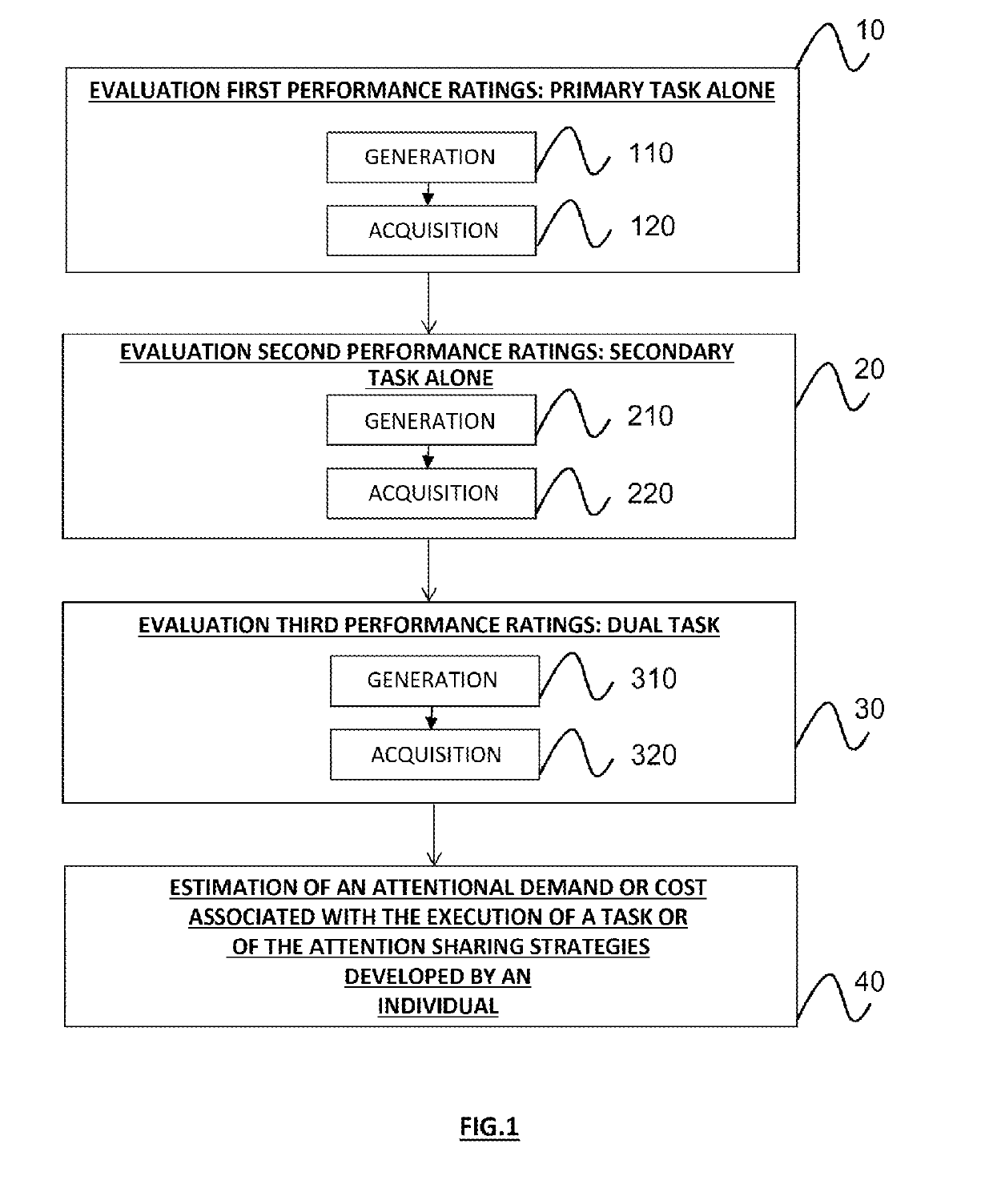Method and system for estimating a demand or an attentional cost associated with the execution of a task or attention sharing strategies developed by an individual
a task or attentional cost technology, applied in the field of performance ratings, can solve the problems of inability to implement the patient themselves, inability to mobilize/consume attentional resources in individuals, and inability to set up the device overall,
- Summary
- Abstract
- Description
- Claims
- Application Information
AI Technical Summary
Benefits of technology
Problems solved by technology
Method used
Image
Examples
first example
3.1. First Example
[0226]The “Time Up and Go” (TUG) is a test of functional mobility used in the evaluation and the monitoring of the re-education of the elderly and of patients notably exhibiting neurological, orthopedic or else traumatological impairments.
[0227]For this relatively easy and quick test, the person is asked to get up from an armchair, to take a step, to turn around and to go back and sit down, in other words to carry out common varied postural and locomotion tasks of daily life.
[0228]Using the signals produced by inertial sensors contained in a mobile terminal of the “smartphone” type and / or connected to the terminal, it is possible to identify these various phases.
[0229]The solution provided in the present application offers the possibility of presenting a secondary task—such as a cognitive task (triggering of an audible stimulus for a reaction time task for example)—as a function of the postural and locomotion tasks (sitting, standing, stepping, etc.) associated wit...
second example
3.2. Second Example
[0230]Walking is conventionally described as a succession of:[0231]i) dual resting (the two feet are on the ground),[0232]ii) single resting (only one foot on the ground). Two different phases are distinguished:[0233]i) the resting phase corresponding to the entire period where the foot is in contact with the ground (this resting phase starts by posing the heel on the ground and finishes with lifting the big toe off the ground), and[0234]ii) the swinging phase where the foot is no longer in contact with the ground and which corresponds to the advance of the lower member (this swinging phase starts by lifting the big toe off the ground and finishes with the posing of the heel on the ground). For a young person in good health, the resting phase occupies 60% of the walking cycle and the swinging phase 40%.
[0235]The walking cycle may be divided into several successive periods:[0236]i) the first period is a dual resting phase during which the weight of the body will be...
PUM
 Login to View More
Login to View More Abstract
Description
Claims
Application Information
 Login to View More
Login to View More - R&D
- Intellectual Property
- Life Sciences
- Materials
- Tech Scout
- Unparalleled Data Quality
- Higher Quality Content
- 60% Fewer Hallucinations
Browse by: Latest US Patents, China's latest patents, Technical Efficacy Thesaurus, Application Domain, Technology Topic, Popular Technical Reports.
© 2025 PatSnap. All rights reserved.Legal|Privacy policy|Modern Slavery Act Transparency Statement|Sitemap|About US| Contact US: help@patsnap.com

